Directions (1-5): Read the given information carefully and answer the following questions.
Eight persons i.e. A, B, C, D, E, F, G, and H are sitting around a circular table but not necessarily in the same order. They all are facing towards the center of the table. Each of them like different cars viz. Ford, Rolls-Royce, Austin, Ferrari, Lamborghini, Porsche, Renault, and Honda. D sits third to the right of the one who likes Austin. C likes Ferrari and sits second to the left of the one who likes Lamborghini. D does not like Lamborghini. D is not an immediate neighbour of C. D is not an immediate neighbour of the one who likes Lamborghini. There are only two persons siting between D and the one who like the Rolls-Royce. Only A sits between G and H. F sits second to the left of G. There are only two persons sitting between the persons who like Porsche and Ford. The person who likes the Honda is not sitting opposite to the one who likes Lamborghini. The person who likes the Renault is not an immediate neighbour of the one who likes the Porsche. The one who likes Lamborghini sits second to the left of E.
Q1. Who sits second to the right of the one who like the Renault Car?
(a) E
(b) D
(c) A
(d) C
(e) H
Q2. How many persons sit between A and the one who like the Honda car if counted anticlockwise from A?
(a) One
(b) Two
(c) Three
(d) Four
(e) No one
Q3. Who sits exactly opposite to G?
(a) B
(b) The one who like Porsche Car
(c) The one who like Honda Car
(d) Both (a)and(b)
(e) Both (a)and(c)
Q4. According to the given sitting arrangement, B is related to Ford and G is related to Austin. In the same way, A is related to which of the following?
(a) Ferrari
(b) Porsche
(c) Honda
(d) Lamborghini
(e) None of these
Q5. If F interchanges his position with H and G interchanges his position with B, then who sits third to the right of G?
(a) E
(b) C
(c) The one who like Ferrari
(d) The one who like Porsche
(e) Both (b) and (c)
Directions (6-10): In these questions, relationship between different elements is shown in the statements. The statements are followed by conclusions. Study the conclusions based on the given statements and select the appropriate answer. Give answer-
Q6. Statements:
S ≤ L ≤ I = P ≥ E > R; L > Q
Conclusions:
I. P > Q
II. Q > R
(a) If only conclusion II is true
(b) If only conclusion I is true
(c) If both conclusions I and II are true.
(d) If either conclusion I or II is true
(e) If neither conclusion I nor II is true.
Q7. Statements:
G > R ≥ E = A ≤ T ≤ S; D ≤ A ≤ J
Conclusions:
I. T > J
II. J = S
(a) If only conclusion II is true
(b) If only conclusion I is true
(c) If both conclusions I and II are true.
(d) If either conclusion I or II is true
(e) If neither conclusion I nor II is true.
Q8. Statements:
A ≥ B > C ≤ D, D ≤ E < F
Conclusions:
I. A ≥ E
II. E < A
(a) If only conclusion II is true
(b) If only conclusion I is true
(c) If both conclusions I and II are true.
(d) If either conclusion I or II is true
(e) If neither conclusion I nor II is true.
Q9. Statements:
G > R ≥ E = A ≤ S; D ≤ A ≤ J
Conclusions:
I. J > G
II. G ≥ J
(a) If only conclusion II is true
(b) If only conclusion I is true
(c) If both conclusions I and II are true.
(d) If either conclusion I or II is true
(e) If neither conclusion I nor II is true.
Q10. Statements:
S ≤ L ≤ I = P ≥ E > R; L > Q
Conclusions:
I. I ≥ R
II. R < I
(a) If only conclusion II is true
(b) If only conclusion I is true
(c) If both conclusions I and II are true.
(d) If either conclusion I or II is true
(e) If neither conclusion I nor II is true.
Directions (11-13): Study the following information carefully and answer the questions given below:
Eight persons viz. S, T, U, V, O, P, J, F belongs to a family. There are four generations in the family and three married couples in the family. U is the child of the granddaughter of O. T is the sister-in-law of F. V is the father-in-law of the husband of J. T is the daughter of S who is not the mother of T. F is mother of J. U is unmarried and F is not child of O.
Q11. Who is the mother of the U?
(a) T
(b) P
(c) S
(d) V
(e) J
Q12. Who among the following is the son-in-law of F?
(a) T
(b) P
(c) S
(d) V
(e) J
Q13. Who among the following is the mother of the aunt of J?
(a) O
(b) P
(c) S
(d) V
(e) J
Directions (14-15): Study the following information carefully and answer the questions given below:
A starts walking in north direction. After walking 5 km he turns 90° clockwise direction, and walks for 3 km. After that he turns to his right and walks 10km. Finally, he turns to the west and walks 7km and reached to the destination.
Q14. What will be the shortest distance between the starting and ending point?
(a) √67
(b) √59
(c) √41
(d) √79
(e) √83
Q15. In which direction A is now with respect to his starting point?
(a) North
(b) East
(c) South
(d) North-east
(e) South-west
Practice More Questions of Reasoning for Competitive Exams:
Reasoning for Competitive Exams |
Reasoning Ability Quiz For ECGC PO 2021- 24th February |
Reasoning Ability Quiz For ECGC PO 2021- 23rd February |
ECGC PO Study Plan 2021 |
Solutions

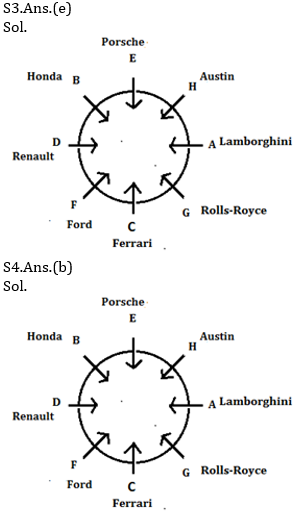
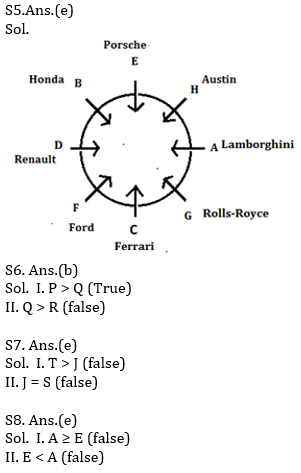
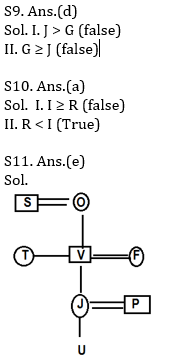
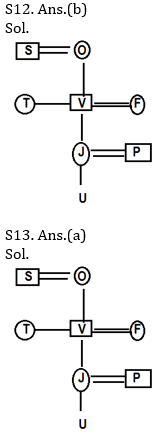
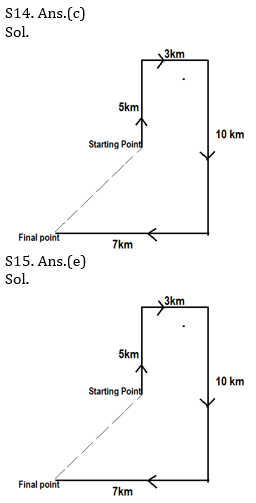
Practice with Crash Course and Online Test Series for ECGC PO 2021:
- ECGC Online Coaching Classes for Probationary Officier 2021
- ECGC PO Mock Tests 2021 – Banking Online Test Series (With Solutions) by Adda247
- ECGC PO 2021 Complete eBooks Kit (English Medium)
Click Here to Register for Bank Exams 2020 Preparation Material

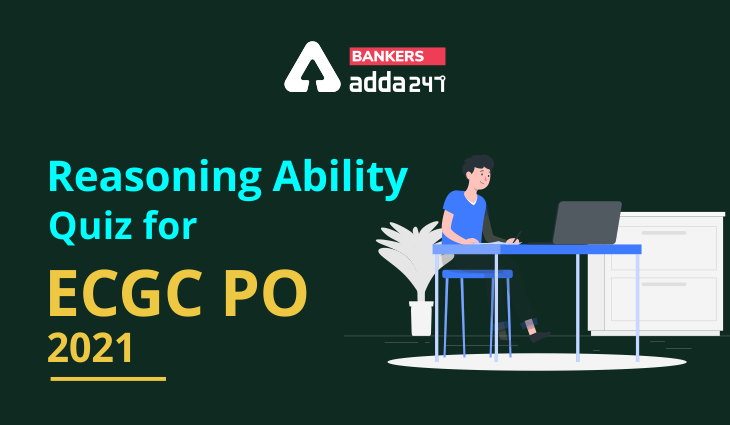


 GA Capsule for SBI Clerk Mains 2025, Dow...
GA Capsule for SBI Clerk Mains 2025, Dow...
 The Hindu Review October 2022: Download ...
The Hindu Review October 2022: Download ...
 SBI PO Cut Off 2025, Check Category Wise...
SBI PO Cut Off 2025, Check Category Wise...


